Abstract
Infection with Coxiella burnetii causes significant economic impact and poses zoonotic risk to people exposed to livestock, yet few studies in South Africa have assessed seroprevalence of C. burnetii infection and no information is available for goats. Very little information is available regarding risk factors and outcomes of C. burnetii infection in peri-urban farming areas where widespread mixing of ruminants occurs. This study estimated the seroprevalence of C. burnetii infection among communally farmed goats in an area adjacent to the densely populated Gauteng province. Sera were collected from 216 goats in 39 herds, and questionnaires were completed to establish management practices as potential risk factors. C. burnetii antibody testing was done by ELISA. Thirty two out of 216 goats tested positive for C. burnetii antibodies and the overall seroprevalence, adjusted for sampling weights and clustering, was 18.4% (95% confidence interval [CI]: 12.2% – 23.5%). The intraclass correlation coefficient was 0.06, indicating low-to-moderate clustering. Multiple logistic regression showed age was significantly associated with seropositivity, with higher seroprevalence in animals ≥ 19 months old (26%) than animals ≤ 6 months old (6%) (odds ratio [OR]: 6.6; p = 0.010). We concluded C. burnetii infection is common in goats in Moretele and a potential cause of abortion in goats and poses the potential zoonotic disease risk.
Contribution: Despite the threats posed on animal health and productivity, scant information is published on C. burnetii in South Africa. This research established preliminary estimates of C. burnetii seroprevalence. The research is original from a South African perspective, relevant to Africa and focused on infectious disease in livestock.
Keywords: seroprevalence; Coxiella burnetii; goats; ELISA; risk factors; zoonosis.
Introduction
Q fever is a zoonotic disease caused by the small gram-negative coccobacillus, Coxiella burnetii, an obligate intracellular bacteria belonging to the order Legionellales and bacterial family Coxiellaceae (Arricau-Bouvery & Rodolakis 2005; Menadi et al. 2020). C. burnetii infection is endemic worldwide, except in New Zealand, and affects a wide range of domestic and wild mammals, fish and some arthropods (Huang et al. 2021; Karagul, Malal & Akar 2019; Kazar 2005). Domestic ruminants such as cattle, goats and sheep are considered the reservoirs of human infection and infected animals shed C. burnetii in the faeces, urine, milk and vaginal discharge (Guatteo et al. 2011; Menadi et al. 2020). More than 40 species of ticks have been shown to be capable of multiplying C. burnetii in their GIT mucosal cells and then passing out viable bacteria in their faeces (Knap et al. 2019; Körner et al. 2020). Ticks are thought to play an important role in the maintenance of infection within domestic and wildlife hosts and infection rates of up to 10% have been reported in some studies (Bellabidi et al. 2020; Körner et al. 2020). Animal vaccines against C. burnetii are licensed for use in some European countries but are not registered or used in South Africa and most of Africa (Bauer et al. 2021; Rahaman et al. 2019).
C. burnetii infections of animals are mostly subclinical but when clinical disease occurs, it is characterised by abortions, particularly in sheep and goats, sometimes on an epidemic scale, and by stillbirths, premature birth and birth of weak offspring (Madariaga et al. 2003; Woldehiwet 2004). In infected ewes and nanny goats, C. burnetii infection can cause infertility and metritis, while infected cows can develop mastitis due to the pathogen (Menadi et al. 2020). Affected sheep shed the organism transiently, and they experience higher rates of abortions than cattle (Waag 2007). In humans, about 60% of C. burnetii infections are associated with asymptomatic disease or mild, self-limiting, flu-like symptoms with occasional complications such as endocarditis, meningitis and atypical pneumonia (Njeru et al. 2016).
C. burnetii infection in animals is of particular importance in developing countries due to poor tick control and mixing of ruminant herds in communal pastures (Vanderburg et al. 2014), which amplify the risk for animals becoming infected. It has been shown that people who are positive for human immunodeficiency virus (HIV) are at higher risk of developing severe signs and symptoms of Q fever (Patil & Regunath 2021) and as South Africa has the highest population of people living with HIV in the world, with 7.7 million HIV-positive people (Parker et al. 2020) out of a population of about 58 million (De Micco et al. 2022), the potential impact of Q fever in humans can be high. The consumption of unpasteurised dairy products, which is widespread in South African communal areas, is one of the transmission modes of C. burnetii infection from animals to humans (Gale et al. 2015). Despite the effects of C. burnetii infection on productivity in ruminants and the associated human health risk, very little has been done to assess infection rates in animal and human populations, especially in South African peri-urban communal farming areas. A study of C. burnetii seroprevalence in cattle in Gauteng province (formerly Transvaal province) estimated C. burnetii antibody prevalence at 8% (Gummow, Poerstamper & Herr 1987) and Adesiyun et al. (2020) reported a seroprevalence of 38% in cattle in a rural area of South Africa at a wildlife-livestock interface. However, there are no reports on C. burnetii seroprevalence in South Africa for goats, which are very commonly kept in communal and peri-urban areas throughout South Africa due to their hardy nature. In South Africa, there is a lack of active surveillance programmes and a lack of epidemiological data, and C. burnetii infection in animals is not listed as a controlled or notifiable disease according to the Animal Diseases Act of South Africa (Act 35 of 1984) (Mangena et al. 2021).
Elsewhere in Africa, C. burnetii infection in animals and humans has been documented in countries such as Ghana, Cote d’Ivoire, Togo and Burkina Faso but, as in South Africa, there are very few active surveillance programmes and hence epidemiological data on infections in humans and animals are sparse (Johnson et al. 2019). As it is a neglected zoonotic disease with potentially serious effects on human health and animal economics, C. burnetii surveys are necessary to establish the impact on human and animal populations, particularly in communal areas.
The objective of this study was to estimate the prevalence of exposure to C. burnetii among the goat population in the villages of the Moretele communal farming area, a peri-urban area adjacent to the densely populated province of Gauteng, South Africa. In addition, associated risk factors for seropositivity and potential outcomes of exposure to C. burnetii were also assessed.
Materials and methods
Study area
The study area was located between latitudes 25.142°S to 25.285°S and longitudes 27.970°E to 28.253°E. Eight villages in the North West province, near the boundary of Limpopo and Gauteng provinces of South Africa, were selected for sampling (Figure 1). The villages are located in the floodplain catchment areas of the Moretele, Apies and Tshwane Rivers. The terrain in the study area is mainly flat, semi-arid and the predominant vegetation types are sour bushveld, savannah and springbokvlakte thornveld (Dynamic Intergrated Geo-Environmental Services 2012). The average annual rainfall in the study area is 565 mm, with rain falling in the summer months between October and March, and the annual average temperature is 25 °C (Accuweather 2022; Dynamic Intergrated Geo-Environmental Services 2012). The human population density in Moretele is about 818/km2 (StatsSA 2022). The study area is peri-urban, located about 30 km north-west of Hammanskraal township and 20 km north of Soshanguve, which is the largest township in Pretoria (Tshwane). Most livestock owners in the area have small herds of cattle and/or goats and make use of communal pastures and drinking points, resulting in frequent mixing of animals from different herds. There is generally minimal veterinary intervention, mostly comprising vaccinations by state veterinary services personnel.
 |
FIGURE 1: Map of study area on the boundary between Gauteng and the North West province, South Africa, showing the sampling locations of goats tested for C. burnetii antibodies. Grey lines indicate roads; yellow squares indicate villages; red dots indicate properties on which C. burnetii-positive goats were found and black dots are C. burnetii-negative properties. |
|
Study design and sampling
The study was conducted in December 2018 and was designed to estimate the seroprevalence of C. burnetii in goats using multi-stage random sampling. Information on goat population distribution by household was obtained from state-employed animal health technicians responsible for animal health in the study area. Only villages where several goat owners owned five goats or more were selected. Within selected villages, random sampling of households by a hat draw method was followed by random sampling of goats within households after obtaining written informed consent from each farmer.
Sample size calculation
Sample size was calculated based on the equation for a sample size to estimate prevalence with 95% confidence in an infinite population assuming simple random sampling (Thrusfield 2007):
where n is the required sample size, Pexp is the expected prevalence and d is the desired absolute precision. A minimum of 110 goats were calculated for sampling based on an expected prevalence of 20% and a desired precision of 7.5%. The design effect (DEFF) for clustering was calculated as follows:
where m is the cluster size and ρ is the intracluster correlation coefficient (ICC) (Bennett et al. 1991), set at 0.2 as it is unlikely to exceed this value for most infectious diseases (Otte & Gumm 1997). For an average cluster size (m) of five goats sampled per household, DEFF was calculated as 1.8 and multiplied by the sample size for simple random sampling to give an adjusted minimum required sample size of 198 goats, to be sampled from 40 households.
Blood sample collection
Ten millilitre of blood from each goat was collected by jugular venepuncture with 20-gauge needle into a vacutainer serum tube. Samples were transported on ice in a cooler box to the laboratory where they were centrifuged at 1500 g for 10 min at room temperature to separate. The serum samples were stored at -20 °C until serological testing.
Collection of data
A questionnaire was used to collect data from goat owners. The questionnaire collected information in two parts with the first part being individual goat-specific information such as age, sex, breed, history of kidding, history of abortion and the origin of each goat sampled. Flock-specific information made up the second part of the questionnaire and obtained information such as flock abortions in the previous 12 months, deaths in the previous 12 months and management practices such as dipping of goats, routine buying and selling of goats and the use of injectable tetracyclines in the goat flocks.
Laboratory testing
Testing for C. burnetii antibodies was done using the LSIVetTM Ruminant Q fever – serum/milk enzyme-linked immunosorbent assay (ELISA) (Priocheck, Leylstad, the Netherlands), which is an indirect ELISA kit for the detection of phase 1 and phase 2 anti-C. burnetii antibodies in ruminant serum or milk. The kit was used according to the manufacturer’s recommendations. Validations performed by INRA and Life Technologies report a diagnostic sensitivity (Se) of 87% and diagnostic specificity (Sp) of 100% for this test (De Oliveira et al. 2018). For each sample, the sample/positive (S/P) ratio was calculated as:
where ODSample was the optical density of each sample tested, ODNC was the average optical density of the negative control and ODPC was the average optical density of the positive control. The C. burnetii antibody titre was then calculated as Titre = S/P × 100. The results were interpreted as follows: ≤ 40 was negative, 40–100 was mild positive, 100–200 was moderate positive and > 200 was strong positive.
Statistical analysis
For the analysis, mild, moderate and strong positives were all regarded as positive results. Age was categorised into terciles (≤ 6 months, 7–19 months, > 19 months). Prevalence of C. burnetii antibodies and 95% confidence intervals was calculated and adjusted for sampling weights and clustering using the svy (survey) commands in Stata 14 (StataCorp, College Station, Texas, United States). Prevalences and confidence intervals were then also adjusted for the reported diagnostic Se and Sp of the ELISA using the formula (Rogan & Gladen 1978):
where TP is true prevalence and AP is apparent prevalence. The ICC (ρ) was calculated as:
where K is the number of herds, Yi+ is the number of seropositive animals in herd i, ni is the number of animals tested in herd i and P is the overall unadjusted seroprevalence.
Univariate analysis of potential risk factors for seropositivity was done by cross-tabulation and the Fisher’s exact test. Factors associated with a positive test outcome at p < 0.2 were selected for inclusion in a multivariable logistic regression model, which was then developed by backward elimination until variables remaining in the model were significant at p < 0.05. Herd size was included as a random effect and adjustment for sampling weights and clustering in the multistage survey design was done using the svy command in Stata®. Univariate associations between seropositivity and its potential consequences, such as abortions, were assessed using logistic regression and odds ratios were calculated. Statistical significance was assessed at p < 0.05.
Ethical considerations
The research protocol was approved by the University of Pretoria Animal Ethics committee (Approval number V001-18), the University of Pretoria Faculty of Humanities Research Ethics committee (Approval number GW20170928HS) and the Department of Agriculture, Forestry and Fisheries (Approval numbers 12/11/1/1/6 and 12/5/1).
Results
A total of 216 goats belonging to 39 goat owners (average of 5.5 goats per herd) were sampled across the eight villages. The total number of C. burnetii antibody-positive goats was 32/216, with estimated animal-level prevalence, after adjustment for sampling weights, clustering and diagnostic Se and Sp, of 18.4% (95% CI: 12.2% – 23.5%). Seropositive goats were found in 20/39 household herds, giving an estimated herd prevalence of 51% (95% CI: 35% – 68%). The intraclass correlation co-efficient (ICC) was 0.06, indicating low to moderate clustering of C. burnetii seropositivity within the tested goat herds.
Univariate associations (p < 0.2) of potential predictor variables with C. burnetii seropositivity were found for age category (p = 0.001) and breed (p = 0.159) (Table 1). These variables were therefore selected for inclusion in the multivariable model.
| TABLE 1: Factors associated with seropositivity to Coxiella burnetiii amongst communally-farmed goats in Moretele District: Univariate analysis. |
For the multivariable analysis, due to small category sizes, breed was re-categorised as Boergoat, Mixed breed and Other (included Kalahari red, Angora and Saanen). In the final model (Table 2), the odds of seropositivity increased with age, being 6.6 times greater in goats > 19 months than in those ≤ 6 months (95% CI: 1.6–26.7; p = 0.010). Prevalence also varied by breed, with the lowest odds of seropositivity in Boergoats and the highest in ‘Other’ (p = 0.033).
| TABLE 2: Mixed-effects logistic regression model of factors associated with Coxiella burnetii seropositivity. |
Univariate analysis of potential consequences of infection (Table 3) showed that goats with a history of abortion were significantly more likely to be C. burnetii-seropositive (OR: 4.6; 95% CI: 1.1–20.2; p = 0.042). In addition, goats in herds that had experienced more than two abortions in the past 12 months tended to have greater odds of seropositivity than goats in herds that had experienced no abortions (OR: 2.9; 95% CI: 0.9–6.8; p = 0.071).
| TABLE 3: Potential consequences of Coxiella burnetii infection in communally-farmed goats in Moretele District and their association with seropositivity to C. burnetii. |
Discussion
This study is the first to document seroprevalence of C. burnetii in goats in South Africa, showing widespread exposure to the pathogen in the study area, with estimated animal-level and herd-level seroprevalences of 18.4% and 51%, respectively. This finding is of public health significance, since it indicates frequent exposure to an important zoonotic pathogen amongst livestock in close proximity to densely-populated urban areas.
Muleme et al. (2017) reported an animal seroprevalence of 25% – 43% for C. burnetii within herds of dairy goats in Victoria, Australia in a study conducted during an outbreak between 2012 and 2014. This higher seroprevalence is likely due to more intensive farming systems in dairy goats, with higher population density and concentrated kidding seasons, which are the highest risk periods for uninfected animals becoming infected by infected placentas and uterine fluids (Muleme et al. 2017). A study in sheep and goats in northern Egypt showed an overall animal seroprevalence of C. burnetii of 15% – 20%, similar to the current study, and the authors suggest that the seroprevalence of C. burnetii is generally higher in goats than in sheep (Selim et al. 2018). The similarity in seroprevalence could be due to similarities in management practices and climatic conditions, with low rainfall, hot temperatures and possibly abundance of ticks being common to the two study areas.
Moretele communal area, as with other rural communities, has most goats on communal grazing and this results in widespread mixing of goat herds, spread of infection between herds and a high herd seroprevalence, compared to private farms with no herd mixing. However, the herd seroprevalence of C. burnetii in this study (51%) was lower than the 80% reported from northern Jordan (Lafi et al. 2020). The higher farm level seroprevalence in Jordan could be explained by the arid nature of pastures in Jordan where the nomadic goats have to walk long distances to find food and also, the more frequent mixing of goat herds in these sparse pastures leads to greater horizontal transmission. In contrast, herd-level seroprevalence was only 8.0% for intensively-farmed dairy goat herds in a study in Victoria, Australia (Tan 2018), where there was likely absence of mixing of goat herds and more frequent use of acaricides. A study in communal areas in Senegal, where wC. burnetii deoxyribonucleic acid (DNA) was assayed in ticks, showed infection rates of up to 37.6% of the sampled ticks (Mediannikov et al. 2010). We postulate that high tick infection rates could have contributed to the higher herd seroprevalence seen in this study, compared to those by Tan (2018). Another study in Algeria, though in cattle, by Menadi et al. (2020) reported a herd seroprevalence of 45.6%, similar to the 51% found in this study. Although this was in cattle, this is possibly due to similarities in animals mixing in communal pastures, similar tick control practices and sharing communal water sources as well as closely related climatic conditions of Algeria and semi-arid Moretele.
There was evidence that increasing age was significantly associated with increased odds of seropositivity and animals > 19 months of age were 6.6 times more likely to test positive for C. burnetii antibodies than were animals < 6 months of age. This age association was also reported in an Egyptian study where animals > 4 years of age had higher seroprevalence than younger ones (Klemmer et al. 2018) as well as in another study in Kurdistan province of Iran where animals 3 years and older were more likely to test positive (Fakour, Jamali & Ahmadi 2021). It is to be expected that, as with most infectious diseases, the seroprevalence will increase with age due to cumulative exposure to C. burnetii over time.
In this study, there was no significant association of C. burnetii seropositivity with herd size. This contrasts with the findings of Rizzo et al. (2016) in north-west Italy, where the seroprevalence in sheep and goat herds larger than 12 goats was about three times higher than in smaller herds. Rizzo et al. (2016) postulate this could be due to crowding which amplifies the risk of horizontal transmission of C. burnetii. In our study, larger herd size did not necessarily mean that there was more crowding at pasture, due to the absence of fencing in the extensive grazing system on communal pastures.
The ICC of 0.06 demonstrates low to moderate clustering of C. burnetii within the tested goat herds. Coxie lla burnetii is a contagious pathogen, therefore, the presence of one infected goat likely means several other goats in the same herd are also infected, and clustering is to be expected. Communal grazing, over and above the risk of aerosol transmission, pasture contamination with faecal material and urine, and vaginal discharge contaminated with C. burnetii, also carries the risk of infected ticks moving within and between goat herds (Angelakis & Raoult 2010). Because in communal systems transmission occurs easily between herds, clustering of contagious diseases within herds is likely to be less pronounced than where herds are kept separate, resulting in only low to moderate clustering, consistent with our finding. In contrast to our study, Adesiyun et al. (2020) reported a much higher degree of clustering of C. burnetii seropositivity in communally farmed cattle at dip tanks adjacent to the Kruger National Park (ICC = 0.57). The difference can be ascribed to the fact that, in that study, clustering was assessed at the dip tank level, not at the level of herds within dip tanks, and animals from different dip tanks are very unlikely to mix, compared with animals from different herds within communal areas.
This study showed an association between seropositivity for C. burnetii and the occurrence of abortion, at both the individual and the herd level. This confirms the importance of C. burnetii as an abortigenic agent that could have significant economic impact in livestock herds. It should be considered as a possible differential diagnosis when investigating single or outbreaks of abortions in ruminant animals in South Africa, and precautions should be taken to prevent zoonotic transmission when handling abortion products, as for other important zoonotic abortigenic agents that occur in South Africa, such as brucellosis and Rift Valley fever.
Conclusion
C. burnetii infection is widespread in the Moretele municipality of South Africa and is present in more than 50% of goat herds. It is likely that the seroprevalence is similar in many other communal areas throughout the country, due to similarities in management practices, as well as the widespread transport of goats between different parts of the country. Further studies in South Africa in cattle, sheep and goats, and in people that are occupationally at risk should be done to determine the true extent of infection with C. burnetii in animals and the occupational risk of infection for humans. Studies into the prevalence of C. burnetii in cases of abortion, mastitis and metritis should be designed to assess the impact of disease on various production systems for cattle, sheep and goats. Once comprehensive data on disease prevalence and impacts in South African livestock farming is elucidated, optimal management practices to mitigate against the spread of C. burnetii withinin intensive and extensive animal husbandry systems can be suggested. These management practices may include effective tick control, purchasing animals from herds that regularly test and minimising mixing of herds, although some of these are not always easily applicable in communal areas. Awareness campaigns should be conducted to educate farmers on the risks of C. burnetii, appropriate protective measures to prevent human exposure, and the benefits of controlling this infection in animals.
Acknowledgements
The authors acknowledge, with gratitude, all the farmers who assisted in making the study possible by availing their animals for testing and providing information in the questionnaires. We also thank the animal health technicians in Moretele communal area, Masethe Maime and Conny Kaotsane, for assistance in identifying goat-owning households for the study.
Competing interests
The authors declare that they have no financial or personal relationships that may have inappropriately influenced them in writing this article.
Authors’ contributions
R.M. and P.N.T. contributed to the study’s conception and design. Funding of the study was done by P.N.T., while the material preparation, data and sample collection were performed by R.M. Data analysis were performed by P.N.T. The first draft of the manuscript was written by R.M., and both authors read and approved the final manuscript.
Funding information
This research received no specific grant from any funding agency in the public, commercial, or not-for-profit sectors.
Data availability
The data generated by this study are available on reasonable request from the corresponding author, R.M.
Disclaimer
The views expressed within this article are solely the authors and do not reflect the opinions and beliefs of the University of Pretoria and its affiliates.
References
Accuweather, 2022, Accuweather, viewed 15 February 2022, from https://www.accuweather.com/en/za/makapanstad/299847/daily-weather-forecast/299847?day=2.
Adesiyun, A.A., Knobel, D.L., Thompson, P.N., Wentzel, J., Kolo, F.B., Kolo, A.O. et al., 2020, ‘Sero-epidemiological study of selected zoonotic and abortifacient pathogens in cattle at a Wildlife-Livestock Interface in South Africa. Vector-Borne and Zoonotic Diseases 20(4), 258–267. https://doi.org/10.1089/vbz.2019.2519
Angelakis, E. & Raoult, D., 2010, ‘Q fever’, Veterinary Microbiology 140(3–4), 297–309. https://doi.org/10.1016/j.vetmic.2009.07.016
Arricau-Bouvery, N. & Rodolakis, A., 2005, ‘Is Q fever an emerging or re-emerging zoonosis?’, Veterinary Research 36(3), 327–349. https://doi.org/10.1051/vetres:2005010
Bauer, B.U., Knittler, M.R., Prüfer, T.L., Wolf, A., Matthiesen, S., Runge, M. et al., 2021, ‘Humoral immune response to Q fever vaccination of three sheep flocks naturally pre-infected with Coxiella burnetii’, Vaccine 39(10), 1499–1507. https://doi.org/10.1016/j.vaccine.2021.01.062
Bellabidi, M., Benaissa, M.H., Bissati-Bouafia, S., Harrat, Z., Brahmi, K. & Kernif, T., 2020, ‘Coxiella burnetii in camels (Camelus Dromedarius) from algeria: Seroprevalence, molecular characterization, and ticks (Acari: Ixodidae) vectors’, Acta Tropica 206, 105443. https://doi.org/10.1016/j.actatropica.2020.105443
Bennett, S., Woods, T., Liyanage, W.M. & Smith, D., 1991, ‘A simplified general method for cluster-sample surveys of health in developing countries’, World Health 44(3), 98–106.
De Micco, F., Angelakopoulos, N., Martino, F., Corbi, G., Cameriere, R. & Campobasso, C.P., 2022, ‘Skeletal age estimation in a contemporary South African population using two radiological methods (Bo/Ca and TW2)’, Australian Journal of Forensic Sciences 54(6), 767–784. https://doi.org/10.1080/00450618.2021.1882569
De Oliveira, J.M.B., Rozental, T., De Lemos, E.R.S., Forneas, D., Ortega-Mora, L.M., Porto, W.J.N. et al., 2018, ‘Coxiella burnetii in dairy goats with a history of reproductive disorders in Brazil’, Acta Tropica 183, 19–22. https://doi.org/10.1016/j.actatropica.2018.04.010
Dynamic Intergrated Geo-Environmental Services, 2012, Proposed construction of 100mw solar power plant on farm Bezuiidenhoutskraal within Moretele Local Municipality of Bojanala Platinum District Municipality, North West Province, Moretele, viewed 15 February 2022, from https://sahris.sahra.org.za/sites/default/files/additionaldocs/BID_2.pdf.
Fakour, S., Jamali, R. & Ahmadi, E., 2021, ‘Seroepidemiological study on Coxiella burnetii and associated risk factors in ruminants at Kurdistan Province, West of Iran’, Comparative Immunology, Microbiology and Infectious Diseases 78, 101691. https://doi.org/10.1016/j.cimid.2021.101691
Gale, P., Kelly, L., Mearns, R., Duggan, J. & Snary, E.L., 2015, ‘Q fever through consumption of unpasteurised milk and milk products – A risk profile and exposure assessment’, Journal of Applied Microbiology 118(5), 1083–1095. https://doi.org/10.1111/jam.12778
Guatteo, R., Seegers, H., Taurel, A.F., Joly, A. & Beaudeau, F., 2011, ‘Prevalence of Coxiella burnetii infection in domestic ruminants: A critical review’, Veterinary Microbiology 149(1–2), 1–16. https://doi.org/10.1016/j.vetmic.2010.10.007
Gummow, B., Poerstamper, N. & Herr, S., 1987, ‘The incidence of Coxiella burnetii antibodies in cattle in the transvaal’, The Onderstepoort Journal of Veterinary Research 54(4), 569–571.
Huang, M., Ma, J., Jiao, J., Li, C., Chen, L., Zhu, Z. et al., 2021, ‘The epidemic of Q fever in 2018 to 2019 in Zhuhai City of China determined by metagenomic next-generation sequencing’, PLoS Neglected Tropical Diseases 15(7), 1–16. https://doi.org/10.1371/journal.pntd.0009520
Johnson, S.A.M., Kaneene, J.B., Asare-Dompreh, K., Tasiame, W., Mensah, I.G., Afakye, K. et al., 2019, ‘Seroprevalence of Q fever in cattle, sheep and goats in the Volta Region of Ghana’, Veterinary Medicine and Science 5(3), 402–411. https://doi.org/10.1002/vms3.160
Karagul, M.S., Malal, M.E. & Akar, K., 2019, ‘Seroprevalence of Q fever in sheep and goats from the Marmara Region, Turkey’, Journal of Veterinary Research (Poland) 63(4), 527–532. https://doi.org/10.2478/jvetres-2019-0070
Kazar, J., 2005, ‘Cox iella burnetii infection’, Annals of the New York Academy of Sciences 1063, 105–114. https://doi.org/10.1196/annals.1355.018
Klemmer, J., Njeru, J., Emam, A., El-Sayed, A., Moawad, A.A., Henning, K. et al., 2018, ‘Q fever in Egypt: Epidemiological survey of Coxiella burnetii specific antibodies in cattle, buffaloes, sheep, goats and camels’, PLoS One 13(2), 1–12. https://doi.org/10.1371/journal.pone.0192188
Knap, N., Žele, D., Biškup, U.G., Avšič-Županc, T. & Vengušt, G., 2019, ‘The prevalence of Coxiella burnetii in ticks and animals in Slovenia’, BMC Veterinary Research 15(1), 368. https://doi.org/10.1186/s12917-019-2130-3
Körner, S., Makert, G.R., Mertens-Scholz, K., Henning, K., Pfeffer, M., Starke, A. et al., 2020, ‘Uptake and fecal excretion of Coxiella burnetii by Ixodes ricinus and Dermacentor marginatus ticks’, Parasites and Vectors 13(1), 75. https://doi.org/10.1186/s13071-020-3956-z
Lafi, S.Q., Talafha, A.Q., Abu-Dalbouh, M.A., Hailat, R.S. & Khalifeh, M.S., 2020, ‘Seroprevalence and associated risk factors of Coxiella burnet ii (Q fever) in goats and sheep in Northern Jordan’, Tropical Animal Health and Production 52(4), 1553–1559. https://doi.org/10.1007/s11250-019-02153-0
Madariaga, M.G., Rezai, K., Trenholme, G.M. & Weinstein, R.A., 2003, ‘Q fever: A biological weapon in your backyard’, Lancet Infectious Diseases 3(11), 709–721. https://doi.org/10.1016/S1473-3099(03)00804-1
Mangena, M., Gcebe, N., Pierneef, R., Thompson, P.N. & Adesiyun, A.A., 2021, ‘Q fever: Seroprevalence, risk factors in slaughter livestock and genotypes of Coxiella burnetii in South Africa’, Pathogens 10(3), 1–14. https://doi.org/10.3390/pathogens10030258
Mediannikov, O., Fenollar, F., Socolovschi, C., Diatta, G., Bassene, H., Molez, J.F. et al., 2010, ‘Coxiella burnetii in humans and ticks in rural Senegal’, PLoS Neglected Tropical Diseases 4(4), e654. https://doi.org/10.1371/journal.pntd.0000654
Menadi, S.E., Mura, A., Santucciu, C., Ghalmi, F., Hafsi, F. & Masala, G., 2020, ‘Seroprevalence and risk factors of Coxiella burnetii infection in cattle in Northeast Algeria’, Tropical Animal Health and Production 52(3), 935–942. https://doi.org/10.1007/s11250-019-02083-x
Muleme, M., Stenos, J., Vincent, G., Wilks, C.R., Devlin, J.M., Campbell, A. et al., 2017, ‘Peripartum dynamics of Coxiella burnetii infections in intensively managed dairy goats associated with a Q fever outbreak in Australia’, Preventive Veterinary Medicine 139, 58–66. https://doi.org/10.1016/j.prevetmed.2017.02.006
Njeru, J., Henning, K., Pletz, M.W., Heller, R. & Neubauer, H., 2016, ‘Q fever is an old and neglected zoonotic disease in Kenya: A systematic review’, BMC Public Health 16(1), 1–8. https://doi.org/10.1186/s12889-016-2929-9
Otte, M.J. & Gumm, I.D., 1997, ‘Intra-cluster correlation coefficients of 20 infections calculated from the results of cluster-sample surveys’, Preventive Veterinary Medicine 31(1–2), 147–150. https://doi.org/10.1016/S0167-5877(96)01108-7
Parker, A., Koegelenberg, C.F.N., Moolla, M.S., Louw, E.H., Mowlana, A., Nortjé, A. et al., 2020, ‘High HIV prevalence in an early cohort of hospital admissions with COVID-19 in Cape Town, South Africa’, South African Medical Journal 110(10), 982–987. https://doi.org/10.7196/SAMJ.2020.v110i10.15067
Patil, S.M. & Regunath, H., 2021, Q fever, University of Missouri, Columbia MO.
Rahaman, M.R., Milazzo, A., Marshall, H. & Bi, P., 2019, ‘Is a one health approach utilized for Q fever control? A comprehensive literature review’, International Journal of Environmental Research and Public Health 16(5), 730. https://doi.org/10.3390/ijerph16050730
Rizzo, F., Vitale, N., Ballardini, M., Borromeo, V., Luzzago, C., Chiavacci, L. et al., 2016, ‘Q fever seroprevalence and risk factors in sheep and goats in northwest Italy’, Preventive Veterinary Medicine 130, 10–17. https://doi.org/10.1016/j.prevetmed.2016.05.014
Rogan, W.J. & Gladen, B., 1978, ‘Estimating prevalence from the results of a screening test’, American Journal of Epidemiology 107(1), 71–76. https://doi.org/10.1093/oxfordjournals.aje.a112510
Selim, A., Ali, A., Moustafa, S.M. & Ramadan, E., 2018, ‘Microbial pathogenesis molecular and serological data supporting the role of Q fever in abortions of sheep and goats in Northern Egypt’, Microbial Pathogenesis 125, 272–275. https://doi.org/10.1016/j.micpath.2018.09.034
StatsSA, 2022, StatsSA, viewed 15 February 2022, from http://www.statssa.gov.za/?page_id=4286&id=10516.
Tan, T., 2018, ‘A pilot study of the seroprevalence of Q fever in cattle, sheep and goats in Victoria’, Thesis (MPhil), The University of Melbourne, Australia.
Thrusfield, M., 2007, Veterinary epidemiology, 3rd edn., Blackwell Science, Oxford.
Vanderburg, S., Rubach, M.P., Halliday, J.E.B., Cleaveland, S., Reddy, E.A. & Crump, J.A., 2014, ‘Epidemiology of Coxiella burnetii infection in Africa: A OneHealth systematic review’, PLoS Neglected Tropical Diseases 8(4), e2787. https://doi.org/10.1371/journal.pntd.0002787
Waag, D., 2007, ‘Q Fever’, In Medical Aspects of Biological Warfare, pp. 199–2014, US Army Medical Research Institute of Infectious Diseases, Maryland.
Woldehiwet, Z., 2004, ‘Q fever (coxiellosis): Epidemiology and pathogenesis’, Research in Veterinary Science 77(2), 93–100. https://doi.org/10.1016/j.rvsc.2003.09.001
|